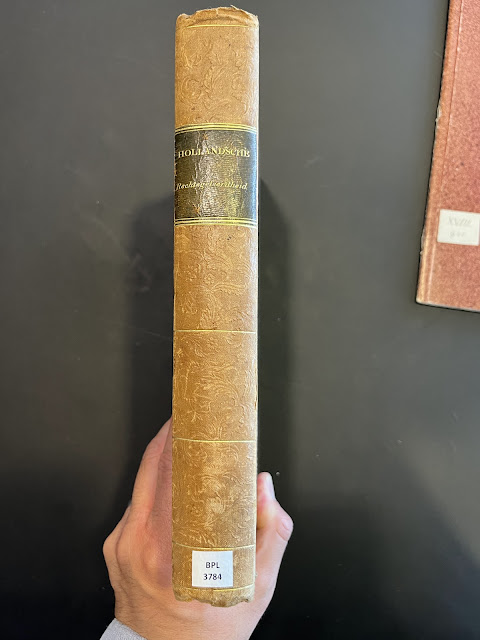One of my goals in The Netherlands was to study the 1631 editio princeps of Grotius's textbook on Roman-Dutch Law. This is an extremely rare text - I don't believe it is available anywhere in the Western Hemisphere. However, the Peace Palace had several copies in the Grotius vault. The librarians kindly retrieved all of them for my study.
The 1631 (Amsterdam and The Hague - but not the Haarlem) are valuable because they contain several visual Tables of Law or Rechts-Tafel. They were not reproduced in later editions, in part because readers found them to be too confusing. I, however, find them very illuminating in understanding the architecture of Grotius's legal reasoning - not only for Roman-Dutch Law but also for Natural Law.
Here is The Hague 1631 (from the Peace Palace Library):
And here is the Amsterdam 1631:
The first table is particularly interesting to me, because it lays out his basic divisions of law ('recht') and typology of justice ('rechtvarrdigheid') - and not a 'division of rights' as Richard Tuck once suggested. This is obviously an attempt at an echo of Ulpian in the opening of the Digest (De Iure et Iustitia = 'on law and justice').
Following a standard Aristotelian analysis, Grotius divides this concept of justice/law taken in a wide sense and a narrow ('eng') sense. It is in the latter that Grotius introduces a correlative analysis of right and duty - some rights are loose claims of one's merit or worthiness ('waerdigheid'), while other rights are strict claims of entitlement ('toebehoren').
One of the main tentative conclusions of my recent research is that 'imperfect' claims of worthiness are rights claims (although not strict claims of entitlement).
However, I feel emboldened in this conclusion based on some of the manuscript research I've done in Leiden. One of my main priorities was to reconstruct how early commentators on Grotius's Hollandsche Rechtsgeleerdheid understood this distinction. Here are some specimens:
Leiden MS BPL 1011 (a Latin translation: van der Linden):
Van der Linden, the author of this Latin translation of Grotius's work, chose to translate recht eng genomen as jus stricto sensu sumptum. The subdivision of this category, however, is interesting. One is rendered as jus personarum, while the other is jus rerum.
Here's another Latin translation - Leiden MS BPL 3784.
The script was mercifully easier to read.
But this manuscript was particularly important for me, because it provides an independent confirmation of my hypothesis from the beginning of this line of research. Waardigheid corresponds to the aptitudo, while toebehooren corresponds to jus perfectum. For whatever reason, this structural alignment of concepts was forgotten, and as a result, modern interpreters of Grotius have been unable to understand the legal logic making up the foundation of De Jure Belli ac Pacis. But now I feel much more confident in making this case, and this manuscript research (there's more I haven't put here) will be central to it.









